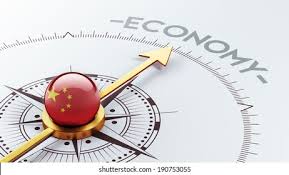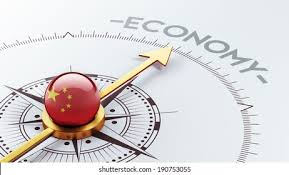
Despite a slowdown, the growth of Chinese exports for the month of October was reported to be above the expectations of analysts. This growth was driven by continued strong global demand for the holiday season, improvements in the shortage of power in China, and an easing of disruptions in the global supply chain. These factors helped the economy to make up for some of the economic issues being faced by the second largest economy in the world.
There was a drop in imports, on the other hand, in October which fell short of experts' predictions. That signaled a weakening in domestic demand in general in the country.
There was a 27.1 per cent year on year growth in China’s exports in October, which was slower compared to the growth rate of 28.1 per cent in the previous month. According to a Reuters’ survey of economists and analysts, growth was anticipated to slow down to 24.5 per cent.
Robust exports would assist to alleviate the deteriorating domestic economy and provide the government more leeway, according to Zhiwei Zhang, the chief economist at Pinpoint Asset Management.
"The government can afford to wait 'til the year end to loosen monetary and fiscal policies, now that exports provide a buffer to smooth the economic slowdown," he said.
A slowdown in China’s manufacturing sector was indicated by recent data. According to an official poll, there was a slowdown of factory activity in October for a second straight month, while industrial production growth slowed down to the worst since March 2020 – when the initial wave of the epidemic was prevalent in China.
However, as a result of considerable government intervention, there has been some improvement in certain supply bottlenecks in recent weeks. After considerable government intervention, the power crisis in the country caused by a shortage of coal, stricter pollution requirements, and high industrial demand has begun to alleviate.
Premier Li Keqiang said on Tuesday that the Chinese government will take steps to help the manufacturing sector as the economy faces fresh headwinds.
China recorded a 20.6 per cent growth in imports in October, which was higher than the 17.6 per cent increase in September but fell short of economists’ forecasts for a 25 per cent increase.
Further in October, the import of crude oil in China also fell to their lowest level since September 2018, along with a slowdown in imports of coal which was because of higher production of coal in the country. Falling demand also caused a decrease in imports of iron ore – a fall the second month in a.
A trade surplus of $84.54 billion was posted by China last month, which was more than the prediction of economists of $65.55 billion and September's surplus of $66.76 billion.
In the July-September quarter, the Chinese economy expanded by 4.9 per cent year on year which was the slowest pace of growth since the third quarter of 2020.
China also had a $40.75 billion trade surplus with the United States in October which was lower than the $42 billion surpluses recorded for September.
(Source:www.asia.nikkei.com)
There was a drop in imports, on the other hand, in October which fell short of experts' predictions. That signaled a weakening in domestic demand in general in the country.
There was a 27.1 per cent year on year growth in China’s exports in October, which was slower compared to the growth rate of 28.1 per cent in the previous month. According to a Reuters’ survey of economists and analysts, growth was anticipated to slow down to 24.5 per cent.
Robust exports would assist to alleviate the deteriorating domestic economy and provide the government more leeway, according to Zhiwei Zhang, the chief economist at Pinpoint Asset Management.
"The government can afford to wait 'til the year end to loosen monetary and fiscal policies, now that exports provide a buffer to smooth the economic slowdown," he said.
A slowdown in China’s manufacturing sector was indicated by recent data. According to an official poll, there was a slowdown of factory activity in October for a second straight month, while industrial production growth slowed down to the worst since March 2020 – when the initial wave of the epidemic was prevalent in China.
However, as a result of considerable government intervention, there has been some improvement in certain supply bottlenecks in recent weeks. After considerable government intervention, the power crisis in the country caused by a shortage of coal, stricter pollution requirements, and high industrial demand has begun to alleviate.
Premier Li Keqiang said on Tuesday that the Chinese government will take steps to help the manufacturing sector as the economy faces fresh headwinds.
China recorded a 20.6 per cent growth in imports in October, which was higher than the 17.6 per cent increase in September but fell short of economists’ forecasts for a 25 per cent increase.
Further in October, the import of crude oil in China also fell to their lowest level since September 2018, along with a slowdown in imports of coal which was because of higher production of coal in the country. Falling demand also caused a decrease in imports of iron ore – a fall the second month in a.
A trade surplus of $84.54 billion was posted by China last month, which was more than the prediction of economists of $65.55 billion and September's surplus of $66.76 billion.
In the July-September quarter, the Chinese economy expanded by 4.9 per cent year on year which was the slowest pace of growth since the third quarter of 2020.
China also had a $40.75 billion trade surplus with the United States in October which was lower than the $42 billion surpluses recorded for September.
(Source:www.asia.nikkei.com)





